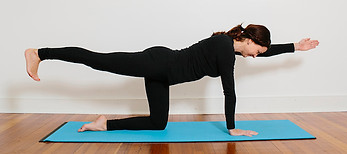Tania Suzuki
Biopsychosocial Therapy
Biopsychosocial Kinesiology
I studied Kinesiology in my Master's degree at UBC. Kinesiology is the study of the human movement. My main focus with kinesiology is rehabilitation, movement restoration and movement creativity, addressing strength, flexibility, balance, coordination and proprioception, either on a functional or artistic/expressive way.
In my master's degree in Kinesiology at UBC I focused on furthering my research in the embodiment field and its connections to pain science and pain treatment, designing a yoga program for people living with chronic pain. I align with the perspective where pain is a biopsychosocial phenomena.
To me kinesiology under a biopsychosocial approach has to do with facilitating, or (re)awakening the integration between our different systems- motor, sensorial, emotional, cognitive, autonomic- including sympathetic/ parasympathectic and immune systems- as well as our social systems, regulating the nervous system as a whole.
When we are injured we become less active and sometimes, even though we know that activity is important, we might find that activity is aggravating when we start moving again. With a kinesiology approach we can facilitate graded exposure to challenging movements or activities, gradually building up your tolerance towards normalcy.


Thus, Kinesiology will help you recovering functional movements, by focusing on the tolerance to activities, as opposed to chasing the level of activity. Not so much what you do, much less how you should do things, but more how you feel when you do what you do, repatterning the nervous system.
The idea is to use movements to reset our self-regulatory mechanisms, so that you can better adjust to the different demands in your day, ranging all the way from the silence of movements- as when we sleep or in deep relaxation practices- to isometric contractions and dynamic activities. Ultimately, the idea is to increase your sense of self-efficacy.
In this sense, I offer Kinesiology not only for those who are in rehabilitation, but also for anyone who is interested in the benefits of movement, be it a physical work out, a creative movement with presence and meaning or even artistic/ expressive movements, supported by some of the methods in the next pages.